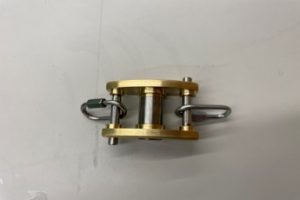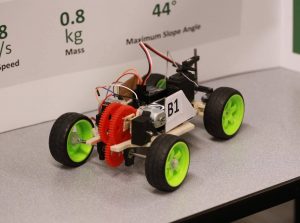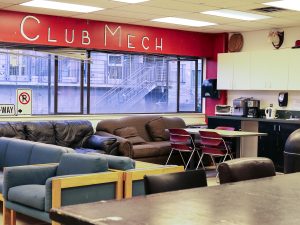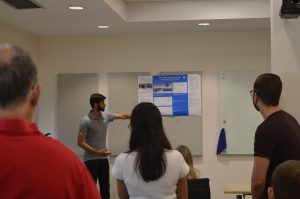The entire educational experience in MECH and APSC is geared toward preparing for your capstone project. It feels like from the early MECH days, right up to and including capstone are focused on preparing us to work alongside a client to try and create something of value. For my capstone, I worked with UBC Rocket to help design the main parachute release mechanism for their sounding rocket. The things we missed out on by working with a UBC-specific client were quite quickly offset by the uniqueness of the experience itself.
A common method of triggering systems with high reliability is using pyrotechnic charges. I had never worked with explosives before or performed analyses regarding them, but more about that later! Capstone is a full eight-month project where we work with an actual client to figure out the scope and deliverables for the project. Fortunately, capstone is divided up into smaller segments to ensure that they are more manageable.
The early parts of the project were probably one of the most important phases of the project – figuring out the scope. A common trend I’ve seen with more open-ended problems is scope creep, which is when things get added to your to-do list that you didn’t initially agree to. To try and avoid this from happening to our team as well, we tried to meet with the client as often as we could during the earlier stages and kept them updated on every progress the team made over the first few weeks. Fortunately, we were able to avoid it through complete transparency with the client on what we can and cannot do along with recognizing what skillsets exist within them and which ones do not.
Now that we could work on the fun part of the project, it had two main functions- releasing successfully when signalled and carrying the weight of the rocket once it had been released. But as we started figuring out what concept alternatives we had, there was that all-familiar feeling that we are already weeks behind. Preliminary prototype testing results were due in about a week or so and we weren’t close to having a good set of concept alternatives, let alone having completed the WDM to make a proof of concept prototype of our leading concept. Once again we had to make sure rapid prototyping was rapid. We went on a team scavenger hunt to gather scrap materials for the prototype.
It was probably while machining the prototype for the first time did it the seriousness of our analysis hit me. We had chosen a type of machine called a tender descender while engaged using a small pyrotechnic explosion, so basically our very rapid prototype had to be structurally sound enough to contain a small explosion as intended to ensure that no one gets hurt. It was a weird feeling because I hadn’t worked with anything before that could potentially affect someone’s safety and well-being if my calculations were not done properly. It is an important thing to realize the impact our work sometimes has and not only on ourselves but also those who would be interacting with it at the end of the day. Well the prototype did end up working, but during testing the pressure seal on our concept was not satisfactory so we ended up using bubblegum to seal the pressure chamber.
It would be somewhat ideal if the final concept that the client paid for didn’t use half-chewed bubblegum to work. So for the next few iterations, the design used two concentric cylinders to create the pressure chamber. Once we were confident the design was reliable and worked as intended, we began optimizing it for manufacturability, assembly and weight. We improved the ease of assembly by having symmetrical parts and reducing the number of components required; ease of manufacturability was also improved when we had symmetrical parts so multiple components could be made on the same setup. Weight was probably one of the harder things to reduce, since our concept was small to begin with, reducing a few grams would add up to a noticeable percentage. The most effective method of reducing weight was selecting the correct materials for each of the components; parts that did not need to be steel shouldn’t be steel was the basic idea and that itself helped reduce the overall weight by 40%.
Testing the prototypes was so much fun! Filling them with black powder and arming them with an electronic match definitely did give me the chills but by the 20th test having no incidents or misfires we started to have some confidence in our loading procedure. So we completed three types of tests – a no load release test, a full load hold test and a full load release test. The tests were performed in order of increasing risk so failure modes could be detected early on and addressed to potentially mitigate the risk of a high-severity test failing unexpectedly.
For our no-load release test, we were testing to quantify the reliability of the prototypes and understand the limits for the minimum amount of black powder required in this system. The full load hold test was intended to verify the load-bearing capacity of the concept, as during flight it is expected to take the full weight of the rocket. For this test, we hung 75 kgs from the 60g concept for over 20 minutes. Finally, for the full load release test we tested to see if the prototype could hold over 50kgs and release successfully when signalled. This test would be the most representative of what would be seen in an actual rocket in terms of the sequence of actions performed and we used this as a final validation test for our prototype.
Overall it was an enriching experience, and as I wrap up the final few documents for the course, it really does feel like the end of a marathon. There were a few long weeks, but seeing our prototype evolve over the weeks truly made it all worth it. Each step along the way was an uncomfortable realization that we could have done things better and getting them done so we didn’t have regrets while handing the project over to our client. From getting our project brief in September to handing over the final concept, it has been one memorable journey!





